While you might be more used to reading Heddels content that concerns the labor-intensive processes behind your favorite jeans, today we’re here to talk about labor in a different context. Yep, that’s right, we’ve put together a definitive explainer on collective bargaining and trade unions—also known as labor unions depending on where in the world you are.
We’ve touched on this subject a little bit in the past, but since a lot of what we cover is rooted in commitments to ethical working conditions, we thought it high time to delve deep into one of the most important aspects of workers’ rights.
What is a labor union and when were they first formed?
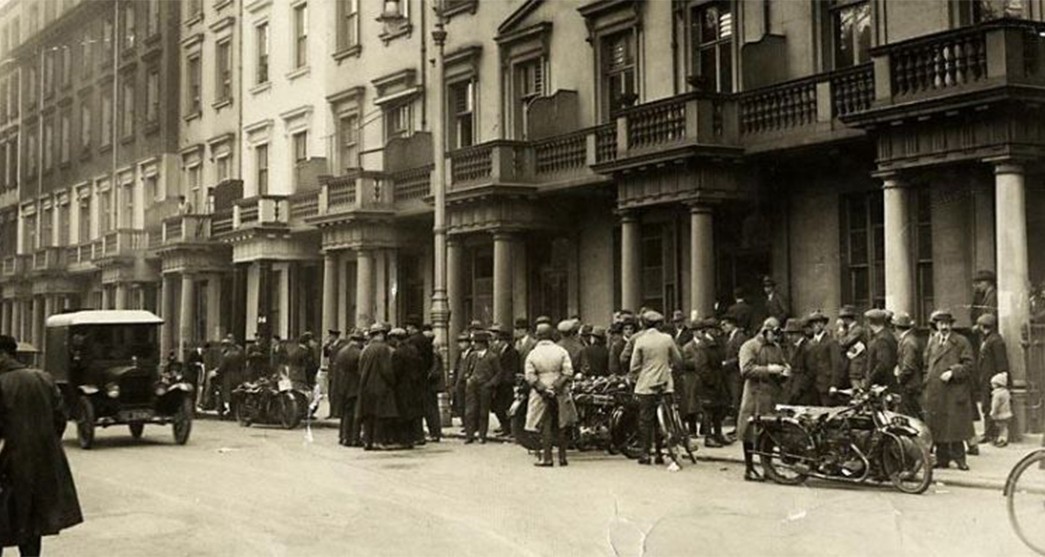
Dispatch riders waiting outside the TUC headquarters in 1926, UK. Image via TUC
We ought to start by explaining exactly what a union is, and why they’re worth talking about, eh? Put simply, it’s an organization of people committed to protecting and improving the interests of its members. This is often in the form of negotiating and improving pay, pension, working conditions, and other workplace benefits.
It’s all democratically run, so those in decision-making or representative positions are volunteers who’ve been elected and trusted by the collective. The union might work on behalf of those with a particular skill, on a more general basis on behalf of members with various trades, or for those in a certain industry.
Union formation really began to pick up in the United Kingdom around the time of the Industrial Revolution (1760-1840), when new factories popped up swiftly and had little regard for the conditions its employees had to endure. Workers fought back and settled many disputes, giving rise to “combinations” of colleagues protecting their rights.
Predictably, the government believed them to be trouble and took quick action to stamp out these early collectives with the Combination Acts, passed in 1799 and 1800. Granted, the general idea of collective bargaining was around way before this in the fourteenth century, but it was outlawed, making striking a punishable practice of up to three months in a rather grotty prison.
It didn’t take long for workplace organizations, which were bubbling under the surface in major cities like London, to become prominent again in the early 1800s, and by 1818, Manchester’s General Union of Trades (said to be the first official union) had taken shape. Meanwhile, over in Lowell, Massachusetts, a group of “mill girls” organized themselves to protest wage cuts in 1834, beginning the United States’ timeline of labor rights activism.
The battle for the right to form unions in the UK stretched on for several decades, and the back and forth of legislation repeals and unrest only calmed in the 1870s, when both initiating a union and taking action by picketing became legal. It was around the same time that workers in countries such as the United States, France, and Germany also doubled down on fighting for workers’ rights and succeeded in having organizations legitimized.
Most early unions were on behalf of those in textile industries, as well as mechanics and blacksmiths, and although they laid the groundwork for organizations to continue to improve the lives of workers across the world, it’s worth remembering that they certainly weren’t inclusive of everyone. Despite the National Labor Union’s attempts to insist that it didn’t discriminate against “race or nationality” in 1869, the organization continually failed to fight hard enough for the rights of African-Americans and women, so in the same year, the Colored National Labor Union was formed.
So there you have it—a high-level explanation of the labor union and its backstory. So far, so good, right? The ins and outs of the subject are far more complex than this, though.
What are unions like today?
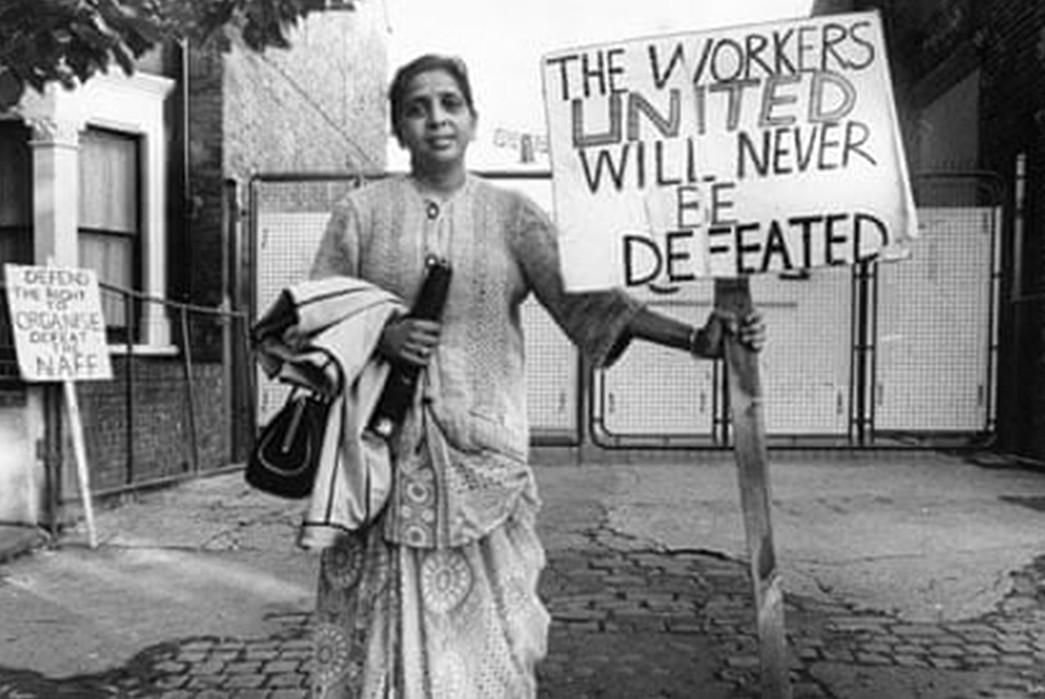
A woman strikes at the Grunwick film processing plant in London, 1976. Image via The Guardian
Trade unionism became tumultuous (yet again), in the twentieth century United Kingdom, with mass strikes and government upheavals that eventually led to a decline in membership that’s still seen today. The UK isn’t the only place to have seen a dip in numbers, either—in the last 50 years, memberships have drastically fallen across the board, and in 2017, Frances O’Grady, the General Secretary of the Trades Union Congress (UK), put this down to an increased reliance on self-employed staff and a younger workforce less inclined to join the collectives.
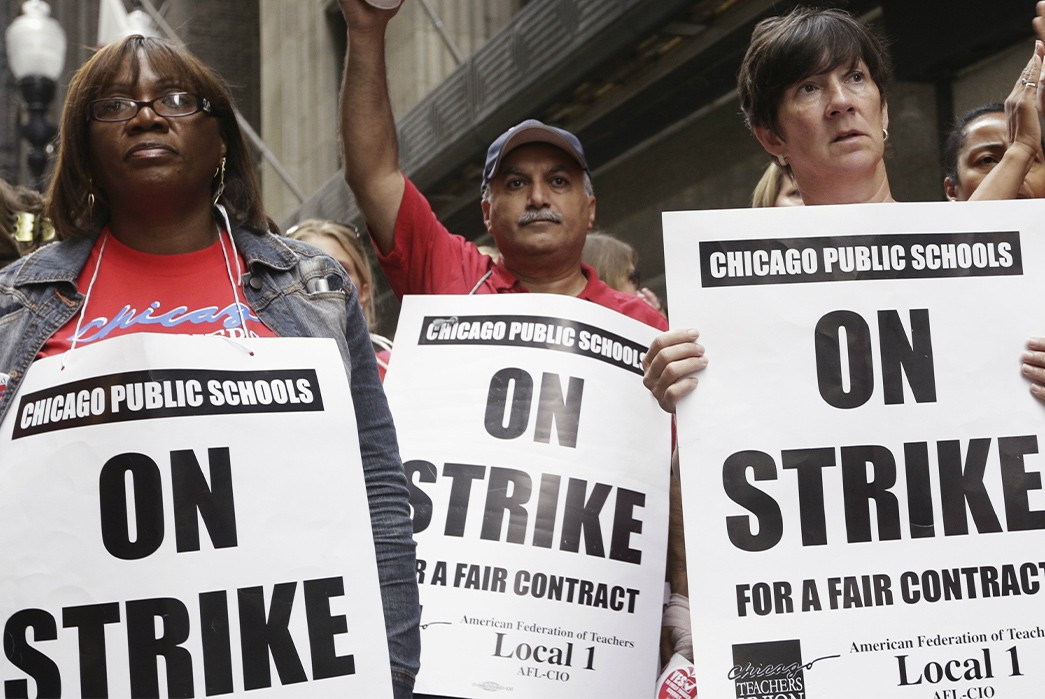
Unionized teachers on strike in Chicago in 2019. Image via Quartz.
Depending on where you’re based, you’ll likely have heard on the news about organizations like the UK’s aforementioned T.U.C., or, in the United States, the Change to Win Organizing Center (CtW) and the American Federation of Labor and Congress of Industrial Organizations (AFL–CIO). Today, the latter are the largest alliances in the country, overseeing most labor unions in the region and recently campaigning for improvements at Nissan and Walgreens, to name a few.
At this point, it’s worth noting that laws surrounding unions vary drastically between different countries, depending on its history and politics.
What are the plus (and minus) points of unions?
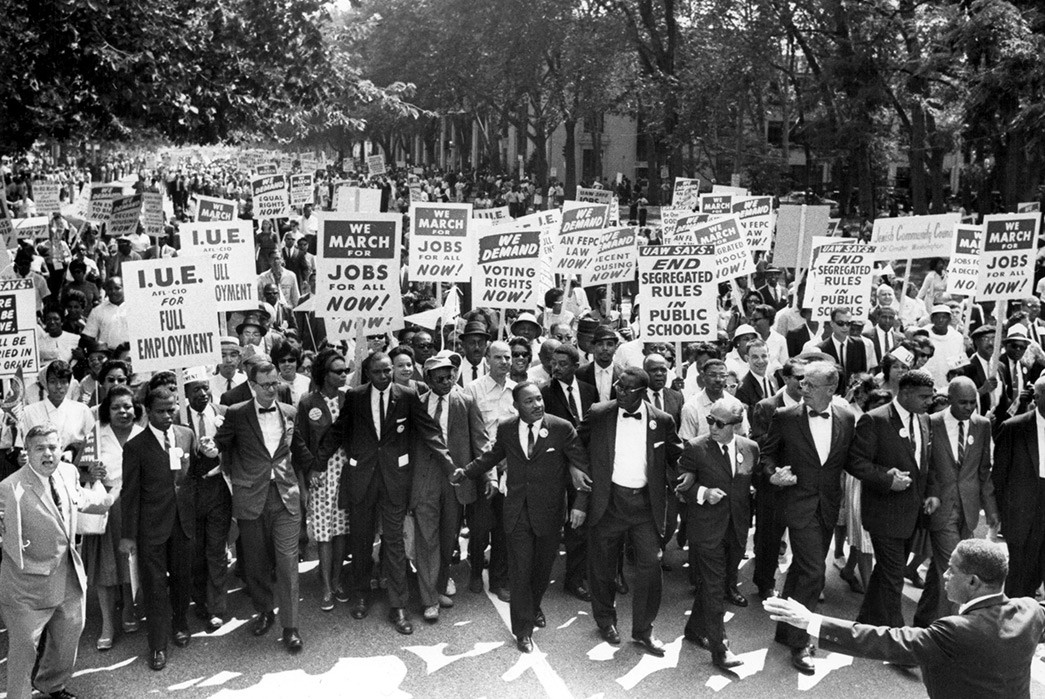
Martin Luther King Jr. and Joachim Prinz at the March on Washington for Jobs and Freedom in 1963. Image via AFL-CIO
Being part of a union is particularly handy for those who live in places where employment legislation isn’t quite what it should be, or for those in roles that are commonly discriminated against. It also offers assistance during redundancy negotiations and grievance or discipline hearings, as well as lobbying for things like increased pay, more holidays, or better childcare opportunities.
It’s not all rosy, though—since the majority decision is the one that goes, anyone with differing views to the rest of the organization might not want to stick around for long. Differences often arise when strikes are planned, with members disagreeing on whether picketing is appropriate and facing internal difficulties, fines, or expulsion if they don’t take part or cross a picket line to go to work. And if workers do strike, they might lose pay and risk a deterioration in their workplace relationships.
How does the “right to work” relate to labor unions in the United States?
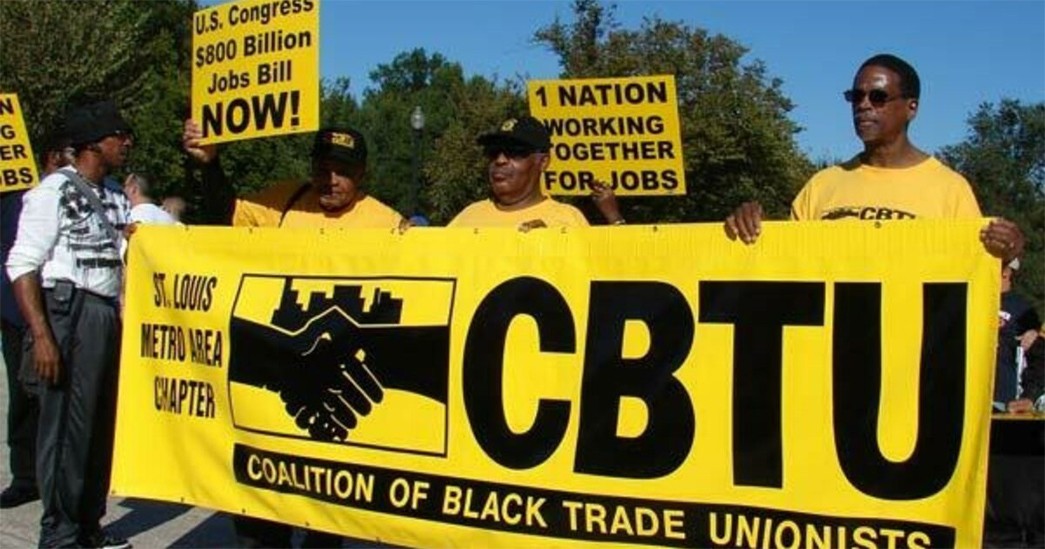
Campaigners from the Coalition of Black Trade Unionists in 2017. Image via In These Times
We’ll start by saying that the term “right to work” doesn’t mean what you think it does in this context, i.e. —a person’s entitlement to work. Confusing, right? The state law is a tricky one to understand, particularly because you’ll get a different viewpoint on its purpose depending on the political stance of the organization or person explaining it.
The general gist is that it entitles workers to be employed in ‘unionized’ workplaces (what’s called a ‘closed shop’) without joining a union. They can also leave a union at any time without having to fear losing their job, as was once the case. As well, even if an employee isn’t a union member, the right-to-work state law allows them to still access the benefits that the organizations offer, only they’ll likely be required to pay a fee for certain services.
Those in favor of the idea believe that it upholds workers’ rights by offering more freedom when choosing to join a union. The thing is though, there are already federal laws in place to prevent workers from being forced to join unions, so the legislation is generally considered to undermine the purpose of these collectives by offering their services to non-members, stripping them of revenue, bargaining power, and influence.
Currently, there are 27 states across the US that enact the law, and the AFL-CIO offers up a few choice statistics about them, namely that of the 15 states with the biggest gender pay gap, 12 of those are right-to-work regions. And on average, an employee’s pay will drop by 3.1% after right-to-work laws are passed.

Women in Bangladesh campaign for better working conditions with a representative from the labor rights organization Solidarity Centre. Image via Solidarity Centre
Despite their recent decline in memberships, there’s no denying that labor unions have been integral to the history and development of workers’ rights, particularly over the last two centuries. There’s still plenty of work to do though—Bangladesh, which is one of the worst countries in the world for labor rights, and simultaneously, the second-largest exporter of garments on the planet, regularly sees thousands of workers mistreated or dismissed for joining unions.
In the region, labor unions have become so key to the improvement of working conditions, pay, and job security that their representation can often be the difference between life and death.





